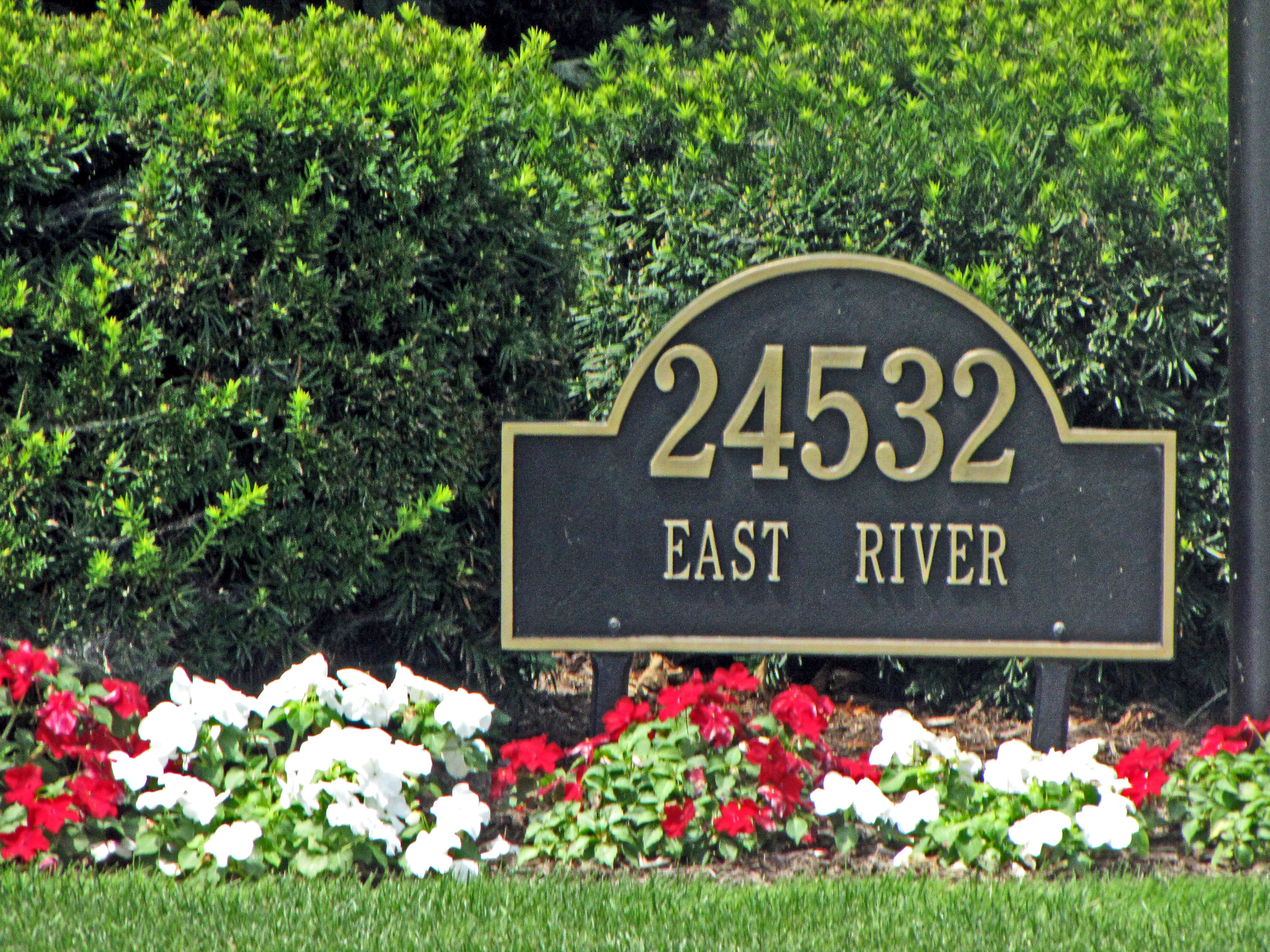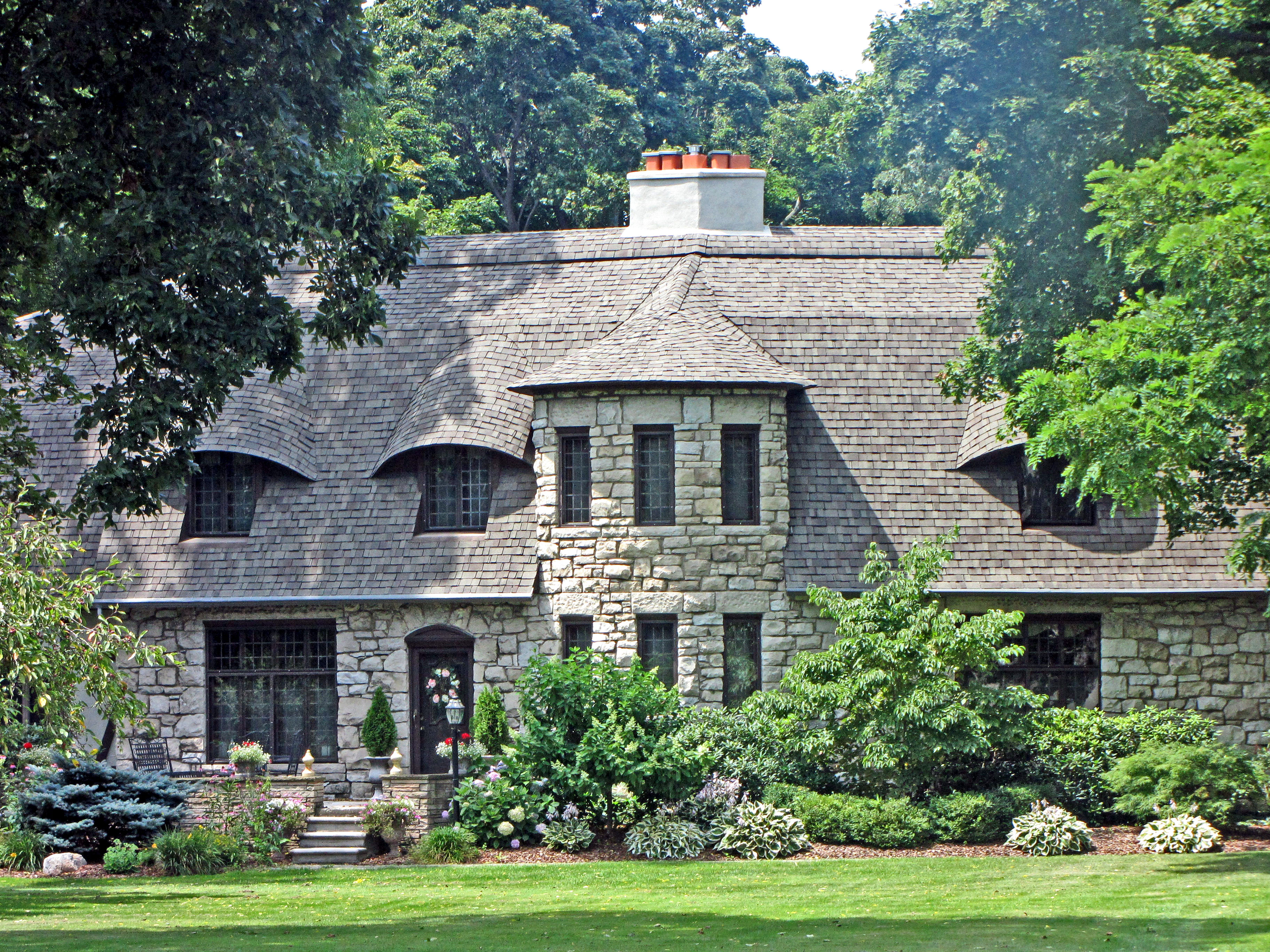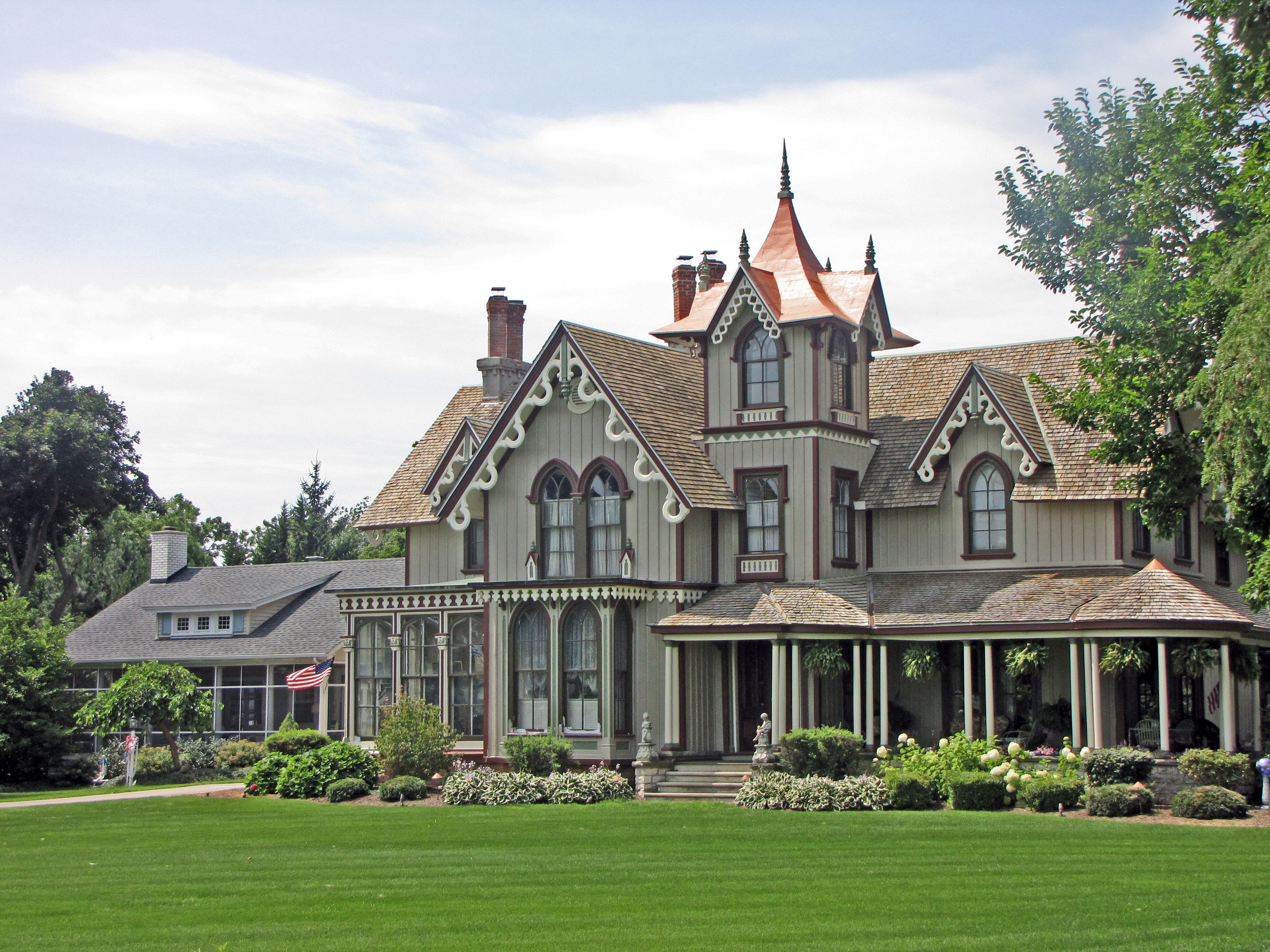
East River Road Historic District

This is one of the most impressive historic
districts in southeastern Michigan. And, I suspect, it is also one of the
least visited. It includes, I believe, St.
James Episcopal Church at 25150
East River Road, the Michigan
Central Railroad Station, the United States Custom House for Grosse
Ile at the intersection of East River Road and Grosse Ile Parkway and seven
or eight elegant homes built on
the west side of East River Road in the 1870s and 1880s. An economically prosperous
upper class emerged in Detroit when the city became a dominant manufacturing
center in the decades after the Civil War. Cities, at that time, were dirty
and odoriferous sites. They were also accurately seen
as unhealthy places where population density and the absence of sewer and water
system spread
contagious
ailments. During the summer, there was no air
conditioning to improve the quality of life. Financially secure families,
at that time, sought clean,
peaceful
rural locations where the wife and the children could spend the summer.
Often they were close enough that the breadwinner of the household could
visit on
week-ends. I presume that Detroit
residents
for Grosse
Ile at the intersection of East River Road and Grosse Ile Parkway and seven
or eight elegant homes built on
the west side of East River Road in the 1870s and 1880s. An economically prosperous
upper class emerged in Detroit when the city became a dominant manufacturing
center in the decades after the Civil War. Cities, at that time, were dirty
and odoriferous sites. They were also accurately seen
as unhealthy places where population density and the absence of sewer and water
system spread
contagious
ailments. During the summer, there was no air
conditioning to improve the quality of life. Financially secure families,
at that time, sought clean,
peaceful
rural locations where the wife and the children could spend the summer.
Often they were close enough that the breadwinner of the household could
visit on
week-ends. I presume that Detroit
residents took boats from the foot of Woodward to Grosse Ile, but after
1871, it was possible to ride a Michigan Central train to the island from
downtown
Detroit. Grosse Ile became an ideal location for the summer homes of Detroit’s
elite. Indeed, the eminent architect, Gordon Lloyd, built his summer home
here and designed other structures on this island.
took boats from the foot of Woodward to Grosse Ile, but after
1871, it was possible to ride a Michigan Central train to the island from
downtown
Detroit. Grosse Ile became an ideal location for the summer homes of Detroit’s
elite. Indeed, the eminent architect, Gordon Lloyd, built his summer home
here and designed other structures on this island.
This website includes separate pages describing
St. James Episcopal Church, the Michigan Central Railroad Station and the
U. S. Customs House. Equally
impressive are the homes in this historic district, homes that are pictured
on this page. All of them face a large and carefully designed yard as well
as the calm, wide Detroit River. They have extremely pleasant views. Most
of them were constructed in the Victorian style, some built with limestone
and
some constructed with wood. You notice that each home is different from all
the others in this historic district. Many of them are embellished with elaborate
gingerbread, illustrating the ken of the carpenters and artists of that era.
I think that some or many of these residences were designed by Gordon Lloyd,
but I do not know which ones. All of these homes appear to be exceptionally
well maintained and occupied almost a century and one-half after they were
completed. With completion of the bridge in 1913, it became possible to drive
to Belle Isle.

This is a marvelous array of architecturally interesting structures and there
is, I believe, no historic district in the Detroit metropolitan area that
offers its residents a more relaxing or pleasant view.
Dates of constructions: About 1840 to about 1880
State of Michigan Registry of Historic Sites: P25,378 Listed June 16, 1972
State of Michigan Historical Marker: None put in place
National Register of Historic Places: Listed
Use in 2009: One church, two buildings used as historical museums and several
residences
Photograph: Ren Farley; August 3, 2009
Description prepared: August, 2009
Return to Michigan Registered Historic Districts